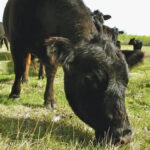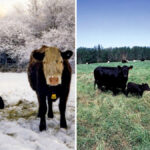
Heifer exodus a year ago means smaller calf crop coming
The number of heifers being sold jumped substantially in the first half of 2022

Splitting up the nursery can have a big health payoff for calves
The Sandhills calving system is a simple way to lower the risk of scours

Follow the money: benchmarking can tell you where to look
National cow-calf cost of production network offers insights on boosting profitability

More calves in the first round is a winning formula
Research council urges producers to consider the payoff from tightening the calving season

Good calving data can deliver dollars, but first you need to record it
Collecting more info during calving can reveal issues you didn’t know you had, says vet

You gotta know how to hold ’em when inserting a feeding tube in a calf
Tube feeding a calf is often a critical intervention but you need to have a good technique

When cows have a choice of chow, what tickles their palate?
Knowing forage preferences of free-range cattle could help boost productivity and influence breeding

Matchmaking: Select cattle genetics that are a fit for your operation
Factors such as forage quality or even how far cattle walk can be key when selecting genetics

Video offers ‘911’ techniques for a newborn calf that’s not breathing
Use a recovery position or some water from a squirt bottle, but never hang a calf on a gate

The right time for calving depends on your farm — and you
While many producers are calving earlier, some have gone the other way

